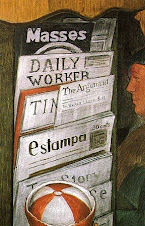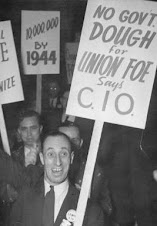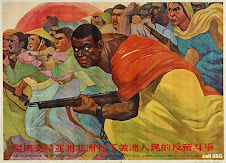By Fred Goldstein
Published Apr 12, 2012 10:27 PM
The ouster of Bo Xilai as Communist Party Secretary of Chongqing comes at a juncture of intensifying contradictions, pressures and antagonisms in China. They reflect three decades of a steadily advancing encroachment of the capitalist mode of production and a dangerous erosion of the socialist framework established by the great Chinese Revolution of 1949.
The Chinese Communist Party leadership is rent with conflict. On the one hand are pressures from China’s growing internal capitalist and middle classes, as well as from the imperialist banks, represented by the World Bank. On the other hand is the growing discontent of millions of workers and peasants.
Furthermore, as the state-owned sector of the economy grows, the capitalist side is also expanding. Capital expands automatically through the accumulation of profits. The state sector, however, expands as a matter of conscious policy and the absolute growth of the economy. Its growth reflects the magnitude of tasks the state-owned banks and enterprises are called upon to perform.
The struggle to control the planned development of society while retaining sovereignty over the Chinese economy inevitably collides with the growth of the internal contradictions of capitalist development and the infectious influence of global finance capital.
The CCP leaders are trying to plan high-speed railroads, advanced communications, hospitals, health centers and aid for rural development to close the gap between the highly developed east and the underdeveloped west. They are introducing more ecologically sound technology and other strategic industries while improving the social security system for 1.3 billion people. At the same time, they have to worry about the development of inflation, real estate bubbles, the global capitalist economic crisis, mounting inequality of wealth, and a clamor by the bourgeois elements for so-called democratic reforms — which would be a channel for open political organizing of the capitalist class and its middle-class supporters.
As these contradictions and antagonisms mature, the question of which way forward for China becomes more and more pressing.
Chongqing versus Guangdong
In the recent period, differences in the leadership have surfaced in the controversy over the so-called Chongqing model versus the Guangdong model. Bo Xilai has been identified with the Chongqing model, which has come under heavy fire since his ouster.
Chongqing is the largest municipality in China and perhaps the world. It has a population of 33 million and is located inland in western China. It is one of China’s four centrally ruled municipalities, the others being Beijing, Shanghai and Tianjin. It has a rural area of 23 million farmers and an urban population of 10 million. Millions of farmers are employed as migrant workers in the city.
Guangdong is the largest province in China, with 104 million people. One-third of the population, 36 million, are migrant workers. It is on the east coast and is the site of the Pearl River delta, where the turn toward market reforms and “opening up” first allowed the establishment of special economic zones. Overseas capitalists from the imperialist countries as well as Hong Kong, Taiwan and south Korea are heavily invested there, and have created a large, low-wage manufacturing industry geared toward exports.
Bo Xilai became the party secretary of Chongqing in 2007. He initiated a policy of emphasizing the dominant role of the state in the economy alongside the capitalist market. Under his regime half of the budget of Chongqing was spent on health care, housing, pensions, education and other public services. (“One or Two Chinese Models?” European Council on Foreign Relations, Asia Centre, November 2011) Some 87 percent of its recent growth was in the state sector.
The government has undertaken to build 800,000 units of low-income housing with rents at 40 percent below market rates and a low-income limit for eligibility. (Bloomberg Businessweek, March 22) The apartments can be owned after five years, but cannot be thrown on the market. The units are built in the center of the city, near higher-income housing to prevent ghettoizing.
The government in Chongqing is also spending 300 billion yuan ($47.6 billion) for rural education, health care and housing. In addition, it has developed a policy to allow and encourage the rural population to migrate to the city, but at the same time balances that with a policy to develop new agricultural areas. In China’s so-called “hukou” system of residency permits, everyone has either a rural hukou or an urban hukou. Urban residents are entitled to social benefits like health care and education at government-subsidized prices.
Chongqing was the first city in China to develop this rural-to-urban program. Its goal is to allow 10 million farmers to get urban permits. (“Bo Xilai and the Chongqing Model,” East Asian Institute, Vol. 1, No. 3)
‘Red culture’ versus more ‘opening up’
Politically, Bo initiated what he termed “red culture.” This included encouraging and organizing the singing of songs from the Mao era and performances of operas from the period of the Cultural Revolution. He stopped commercials on the local television station, replacing them with Maoist and other readings and performances. He had Mao sayings tweeted to cell phone users in the city. And he took a 1,000-member singing troupe to Beijing to sing Maoist songs.
Bo recommended that students and government workers spend time in rural areas to get experience with the life of the masses.
Bo initiated a crackdown on gangsters and corrupt party and government officials. And he initiated this by calling on the masses to submit “letters of denunciation.”
The Guangdong model, on the other hand, emphasizes the capitalist market as the dominant force in development. Shenzhen is the city that Deng Xiaoping visited in 1992 when he declared “opening up” China to foreign investment. It was the first special economic zone. Since then the province has been known as the area where the capitalist market prevails over state enterprises and planning.
The present party secretary in Guangdong, Wang Yang, was appointed in 2007. He had been in Chongqing, but Bo Xilai took his place. Wang has openly advocated the superiority of the capitalist market in allocating resources. He has called for “small government.” (Wall Street Journal, March 14) Wang’s policy is for further “opening up” and “reforms.”
Guangdong has been the site of numerous workers’ strikes and rebellions. Some 200-plus strikes took place in the Pearl River delta last year, beginning in May with Honda workers near Guangzhou. (The Economist, Nov. 26, 2011)
Wang preaches democracy, but the class orientation of his democracy was illustrated by an experimental local election he authorized in the city of Dudan last September. As The Economist reported, fewer than 7,000 local inhabitants were allowed to vote, while 60,000 sweatshop workers who had come from other provinces were disenfranchised.
‘Red GDP’
Before Bo was ousted, he and Wang were both candidates for the nine-member Standing Committee of the CCP’s Politburo. There was open struggle between them. Bo called for a “red GDP,” meaning economic development had to be subordinate to the well-being of the masses. Their differences emerged publicly in a famous controversy shrouded in an analogy called “cutting the cake.” The “cake” was a metaphor for the GDP — the country’s total production of goods and services.
On July 10 of last year, Bo said that a “better division of the cake” takes priority over “making the cake bigger.” The next day Wang answered with “to make the cake bigger, we must still concentrate on economic development.” In other words, overcoming inequality takes a backseat to production and profits. (“Bo Xilai and Wang Yang: China’s Future Leaders?” Jeffrey Hays, factsanddetails.com, updated March 2012)
The political left in China has rallied to the cause of Bo, and had great hopes for his ascendancy to the Standing Committee. In the wake of his ouster, many web sites of the left have been shut down for a month. The struggle is shrouded in secrecy, and it is very hard for the masses or revolutionaries and progressives inside China, as well as outside, to get any kind of accurate picture.
But it is clear that the Bo forces favoring the Chongqing model are oriented to blocking further inroads of capitalism in China and reversing it, if possible. The forces that side with Wang and the Guangdong model are for widening the capitalist road.
Center-right bloc against Bo
The immediate task in the present struggle is to push back against the right and the counterrevolution. However, by lining up against Bo, the party center is in a bloc with the right. The center is fearful of the Maoist revival and the leftist mood. The fear is that this could merge with the mass discontent down below and take the form of not just an economic struggle against inequality, but a political struggle against the capitalist road. (Last year China reported 180,000 “incidents” — protests, strikes and rebellions.) But the right wing is counterrevolutionary and wants to go all the way in bringing the capitalist class to power.
In truth, the Chongqing model, while certainly preferable to free-market capitalism and the political reaction of the Guangdong model, is only a stop-gap measure at best. It still retains the capitalist market as a significant force. And capital grows through the accumulation of profits. Furthermore, 93 of Fortune 500 global corporations are operating in Chongqing.
Reviving Maoist culture is a step in the right direction. Fighting inequality is also a step in the right direction. But what is more to the point is to revive the spirit of workers’ struggle that was advocated and led by Mao.
Cultural Revolution model
Before Bo was ousted, Premier Wen Jiabao attacked Bo and warned of the “horrors of the Cultural Revolution.” What precisely were these “horrors”? The essence of the Cultural Revolution was to mobilize and empower the workers to run socialist society, in the spirit of the Paris Commune. The goal was to oust privileged officials from their comfortable positions of authority and establish a revolutionary dictatorship under the direct authority of the proletariat. Of course, excesses were committed during that period. But the excesses were not the essence of what took place. The essence was the attempt to “storm the heavens,” as Marx referred to the goal of the Paris communards. The essence was for the Chinese workers to rule directly and take their destiny into their own hands. No amount of vilification of the Cultural Revolution can erase that.
No one could suppose for a moment that such a development is in the offing. But everyone in China who stands for the working class and Marxism must be asking themselves, which way back? How do the Chinese workers and peasants get back to the socialist model they once had?
Deng Xiaoping and his political descendants in China justified their program of so-called “market socialism” on the ground that China needed the capitalist market and capitalist technology to develop. Leaving aside the validity of that assertion, the fact is that China has developed enormously. It is now the second-largest economy in the world. The working class has gone from 30 million to more than 450 million. China is competing with imperialism in cutting-edge technology.
All justification for needing capitalism to further develop has been undermined by China’s economic advances. The interests of the workers have been mercilessly sacrificed, counterpoising them to the need for development. The task now is to find the way back. When casting about for models to take China back on the socialist road, the road of the Cultural Revolution is a glorious one. It’s not necessary to retain the same name or make it a carbon copy of the original. What is important is to revive its revolutionary essence.
Subscribe to:
Post Comments (Atom)










































No comments:
Post a Comment